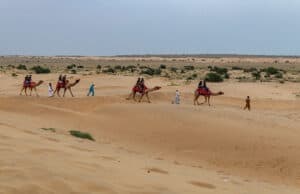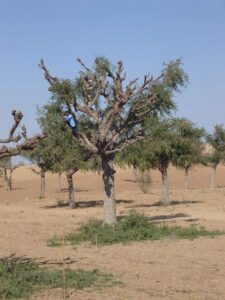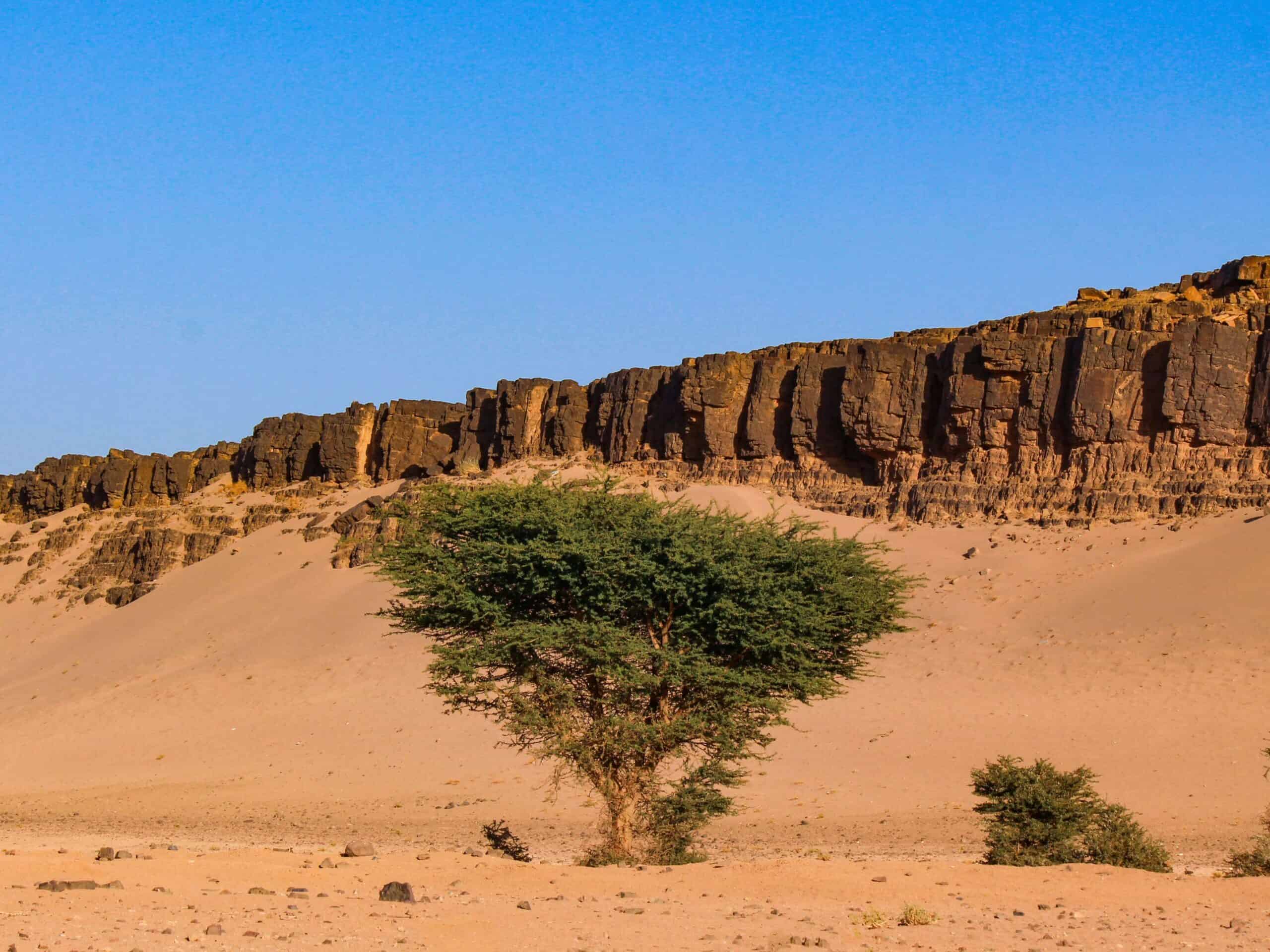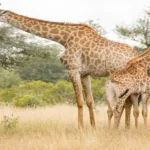Explore the Indian desert and its unique features: India, renowned for its diverse landscapes, hosts a captivating array of terrains, among which deserts stand out as distinctive wonders.
The vastness of India’s deserts, scattered across its geography, is a testament to the country’s rich natural tapestry. Among these, the Indian desert beckons with its unique allure, inviting exploration into its secrets.
Discovering the desert’s exceptional features becomes a fascinating venture, shedding light on the remarkable weather conditions, the resilient plant life that thrives in the arid expanse, and the diverse array of animals that have adapted to this harsh environment.
In this journey, we unravel the significance of Indian deserts, delving into the tapestry of landscapes that contribute to the nation’s geographical diversity.
Diversity of Indian Deserts
India boasts a diverse range of deserts, each with its own unique characteristics. From the arid expanses of the Thar Desert in the northwest to the salt marshes of the Rann of Kutch in the west, the country showcases a remarkable variety of desert landscapes.
In the northern regions, the cold deserts of Ladakh and Himachal Pradesh contrast starkly with the scorching heat of the Thar.
Towards the east, the white desert of the Great Rann, situated in Gujarat, adds another dimension to India’s desert panorama.
As we delve into the exploration of these deserts, the anticipation builds to unravel the distinctive features that define each, promising a journey through the heart of India’s geographical diversity.
The Largest Indian Desert (The Thar Desert)
Transitioning from the overview of diverse landscapes, our focus now shifts to the largest Indian desert – the Thar Desert. Encompassing the northwestern part of the country, the Thar stretches approximately 200,000 square kilometers from the southeastern region of Pakistan to the northwestern state of Rajasthan in India.
This vast expanse stands out prominently in India’s geographical makeup. Celebrated for its sheer size, the Thar captivates with landmarks like the enchanting Sam Sand Dunes, where endless golden sands create a mesmerizing landscape.
Beyond its physical dimensions and visual allure, the Thar Desert holds significant cultural and historical value.
Noteworthy landmarks, such as the imposing Jaisalmer Fort, rise proudly from the sandy terrain. This architectural marvel not only attests to the region’s history but also provides a strategic vantage point for observing the vastness of the desert.
The cultural fabric of the Thar Desert is woven with the stories of its resilient inhabitants, whose lives are intricately connected to the ever-shifting sands.
This exploration into the largest Indian desert reveals not only its physical dimensions but also the rich heritage and enduring spirit thriving amidst its arid grandeur.

Image by: Ninara, License: CC By 2.0
Explore the Largest Indian Desert and Its Unique Features
Nestled within the expansive Thar Desert lies a treasure trove of distinctive features that define its singular allure.
From the undulating sand dunes that stretch as far as the eye can see to the resilient flora and fauna that have adapted to the challenging environment, the largest Indian desert invites exploration into its fascinating ecosystem.
Expansive Sand Dunes: The Thar Desert boasts vast stretches of sand dunes, with the iconic Sam Sand Dunes being a prime example. These ever-shifting formations create a visually dynamic landscape, evolving with the winds.
Rocky Outcrops and Plateaus: Scattered across the desert are rocky outcrops and plateaus, contributing to a diverse topography. Shaped by the forces of wind and time, these formations add a rugged charm to the Thar’s scenery.
Aravalli Range: Extending into the Thar, the Aravalli Range presents elevated vantage points. This mountainous terrain not only adds to the geographical diversity but also offers panoramic views of the expansive desert.
Salt Flats in the Rann of Kutch: The Thar features salt flats, notably in the Rann of Kutch. During the dry season, these flats are covered in a layer of salt, creating a surreal landscape.
Rich Biodiversity: Contrary to its arid appearance, the Thar Desert supports a rich biodiversity. From the resilient khejri tree to the Indian spiny-tailed lizard and graceful chinkara, the desert’s flora and fauna showcase remarkable adaptations to survive in harsh conditions.
Weather Condition
The Thar’s weather conditions play a pivotal role in shaping its unique landscape. With scorching daytime temperatures often exceeding 40°C (104°F) and giving way to cool nights, the desert experiences a remarkable diurnal temperature variation.
This dynamic climatic dance not only sculpts the ever-shifting sands but also influences the behavior and survival strategies of the diverse life forms within.
Flora (Plants) of Thar Desert
Amidst the arid expanses, the Thar Desert’s flora has evolved to thrive in the challenging conditions. The khejri tree (Prosopis cineraria) stands as a resilient symbol, showcasing adaptability with its ability to survive in low water availability.
Another notable presence is the sewan grass (Lasiurus sindicus), a hardy perennial grass that blankets the desert floor, demonstrating nature’s capacity to flourish in seemingly harsh environments.

Image by: LRBurdak, License: CC BY-SA 3.0
Fauna (Animals) of Thar Desert
The fauna of the Thar Desert mirrors a remarkable adaptation to the arid terrain. The Indian spiny-tailed lizard (Uromastyx hardwickii), characterized by its distinctive spiky tail and heat-absorbing body scales, is well-suited for the desert’s harsh conditions.
Meanwhile, the chinkara (Gazella bennettii), a desert-adapted gazelle, gracefully traverses the landscape, embodying the spirit of endurance and agility required for survival in this arid realm.

Image by: Mike Prince from Bangalore, India, License: CC BY 2.0
Also Read: Natural Vegetation Types in India [A Guide]
A Vibrant Ecosystem Amidst the Arid Landscapes
Beyond individual components, the Thar Desert’s ecosystem weaves a complex tapestry. Sweeping sand dunes, rocky formations, and salt flats collectively contribute to a diverse topography that sustains life in this challenging environment.
The vibrancy of the ecosystem lies in the intricate interplay between flora and fauna, showcasing nature’s resilience and adaptability in the face of arid landscapes.
This harmonious coexistence exemplifies the delicate balance that defines the unique features of the largest Indian desert.
Unique Formations and Geographical Features
The Thar Desert, a vast expanse in the northwestern part of India, is characterized by unique formations and geographical features that contribute to its mesmerizing landscape.
One prominent feature is the expansive sand dunes that stretch across the desert, creating a surreal and ever-changing terrain.
These dunes, such as the iconic Sam Sand Dunes, rise and shift with the wind, forming intricate patterns that define the desert’s visual identity.
In addition to the mesmerizing sand dunes, the Thar is punctuated by rocky outcrops and plateaus, adding a diverse topographical dimension to the region.
These formations, shaped by the forces of wind and time, create a dramatic contrast to the soft curves of the sand dunes.
The Aravalli Range, extending into the Thar, contributes to the rocky terrain, offering elevated vantage points that reveal the vastness of the desert.
Salt flats, like those found in the Rann of Kutch, further enrich the geographical tapestry of the Thar Desert.
These expansive flats, covered in a layer of salt during the dry season, transform into a surreal, reflective surface after the monsoon rains.
The interplay of light and shadow on these salt flats during sunrise and sunset adds a captivating element to the desert’s diverse landscapes.
In essence, the Thar Desert’s unique formations, from shifting sand dunes to rocky plateaus and salt flats, create a visual spectacle that reflects the intricate dance between natural forces.
This geographical richness not only shapes the physical characteristics of the Thar but also contributes to its ecological diversity, making it a captivating region to explore and appreciate.
Human Connection and Activities in the Great Indian Desert
The Great Indian Desert, also known as the Thar Desert, is not only a landscape of natural wonders but also a region deeply connected to human life. Indigenous communities, such as the Rajputs and various tribal groups, have thrived in this arid expanse for centuries.
Their lives are intricately woven into the fabric of the desert, relying on age-old practices and traditions to navigate the challenges posed by the harsh environment.
The nomadic lifestyles of some communities reflect a harmonious coexistence with the desert, adapting to its rhythms and making the most of its resources.
Indigenous communities in the Great Indian Desert engage in a variety of economic activities that are deeply rooted in the desert’s unique conditions. Agriculture, albeit challenging, is practiced using traditional methods and drought-resistant crops.
Animal husbandry, especially the rearing of camels, plays a crucial role in sustaining livelihoods. The resilient spirit of these communities is evident in their ability to adapt and thrive in an environment that demands resourcefulness and endurance.
Tourism in the Indian deserts has gained prominence, offering visitors a glimpse into the rich cultural tapestry of the region. Activities such as camel safaris, where tourists traverse the vast sand dunes, and visits to traditional desert villages provide immersive experiences.
The architecture of historical forts, like Jaisalmer Fort, stands as a testament to the desert’s cultural heritage, attracting history enthusiasts and curious travelers alike.
Through these tourism activities, the Great Indian Desert becomes a bridge between the past and the present, inviting people to appreciate both its natural beauty and the resilience of its human inhabitants.
Conclusion
Our journey through the diverse landscapes of Indian deserts, particularly the Thar Desert, reveals a tapestry of unique features. From the sweeping sand dunes to resilient flora and fauna, the Thar showcases the remarkable adaptability of life in arid conditions.
Summarizing our exploration, it becomes evident that the Indian deserts are not just geographical wonders but vibrant ecosystems supporting a variety of life.
Take a moment to appreciate the beauty and significance of these landscapes. The shifting sands, the hardy plant life, and the diverse fauna tell a story of survival and resilience. As we marvel at these natural wonders, let’s also acknowledge the human connection, where indigenous communities thrive amid the challenges.
Now, I invite you to share your thoughts or experiences related to deserts. Your unique perspective adds to the richness of our understanding. How have deserts inspired you, or do you have a memorable desert experience to share? Let’s celebrate the diverse and captivating world of Indian deserts together.






